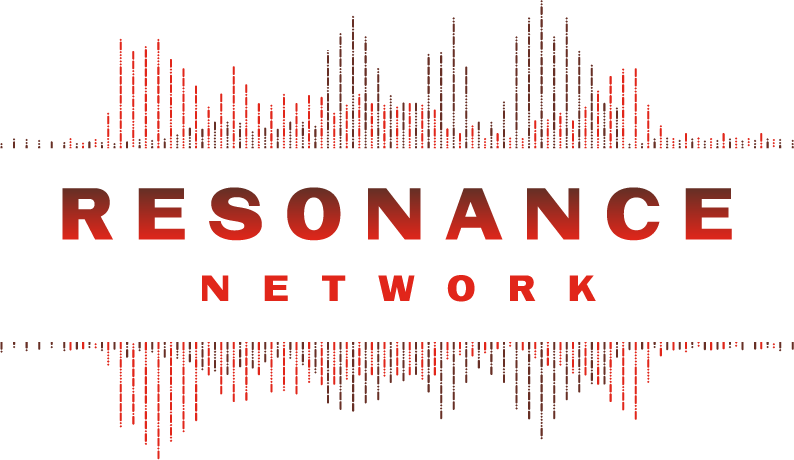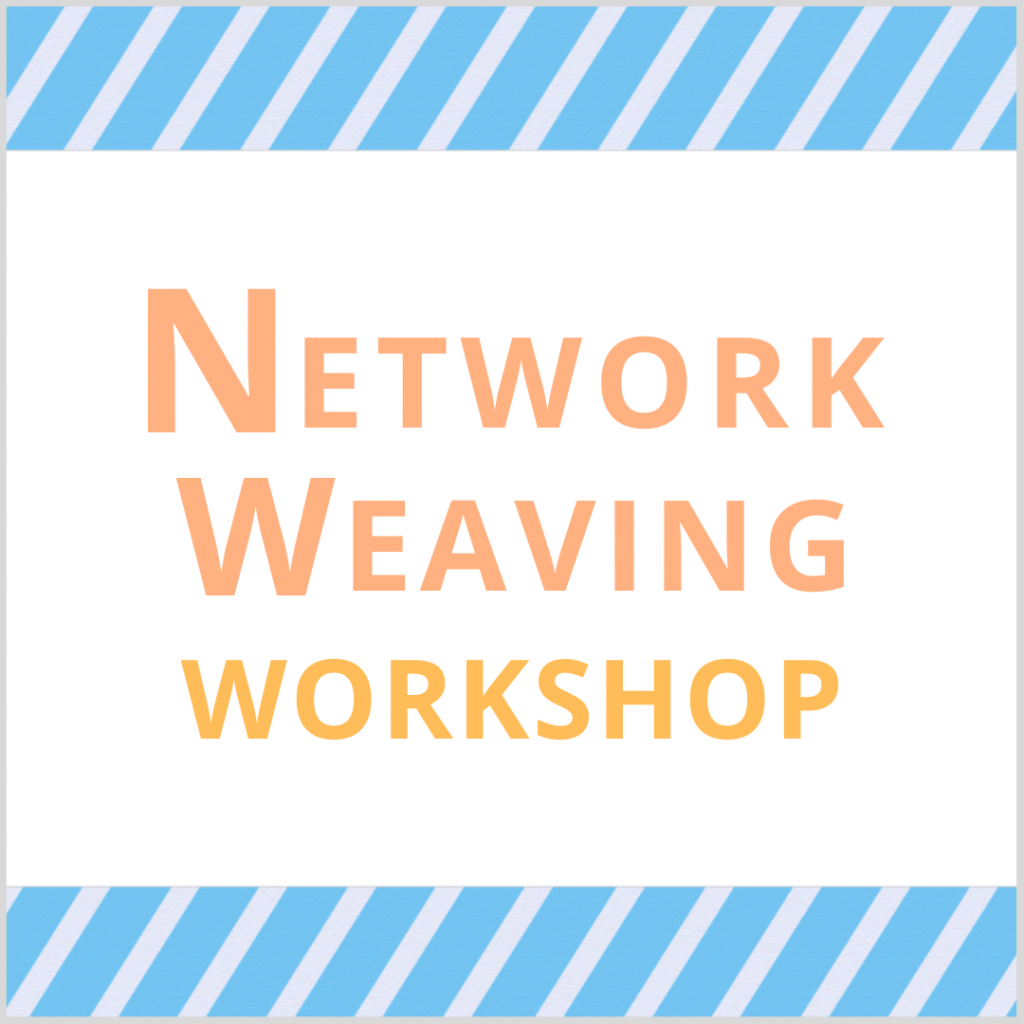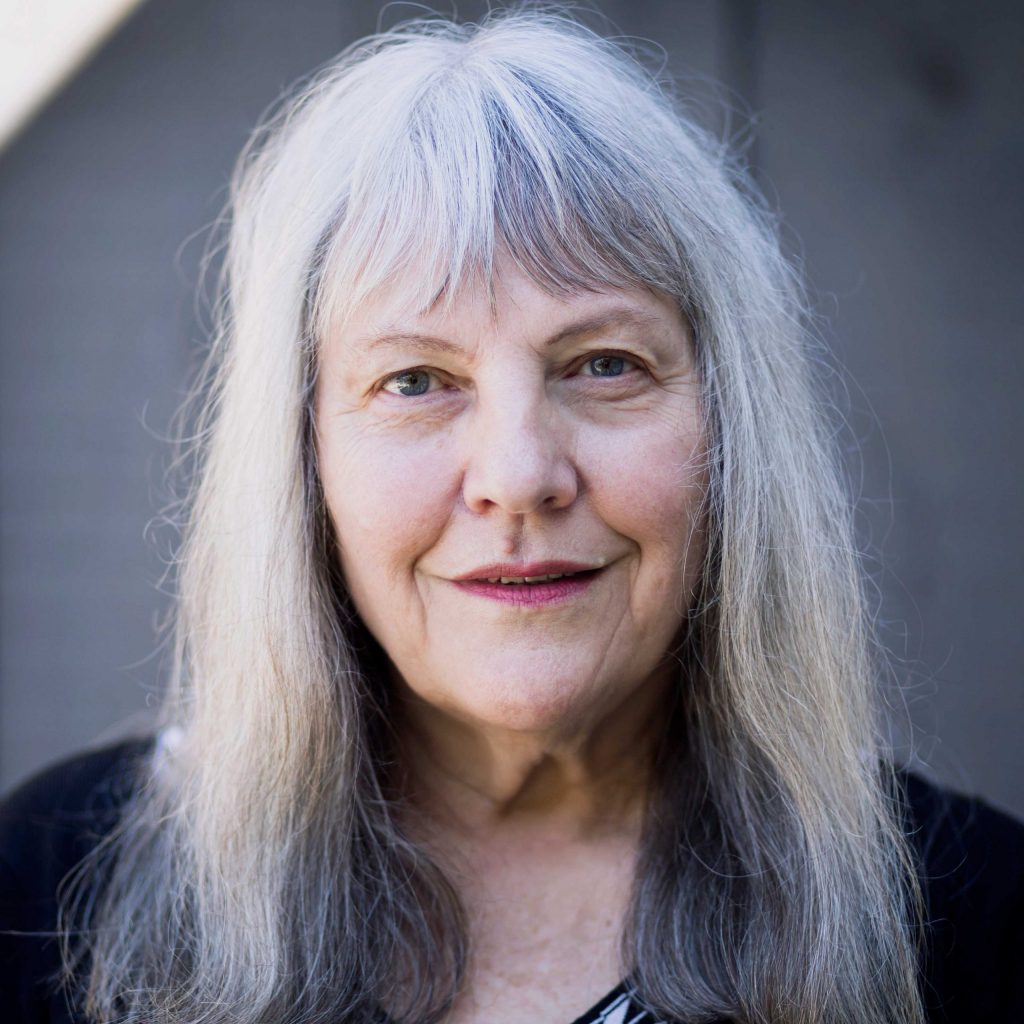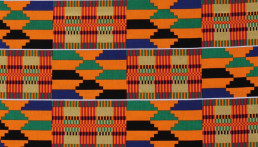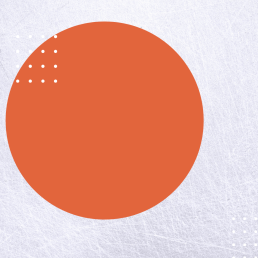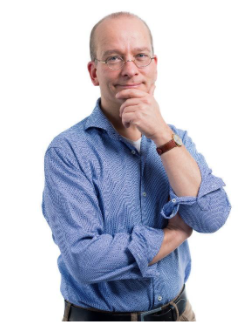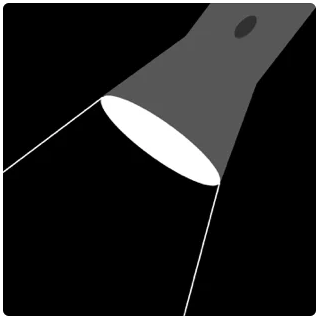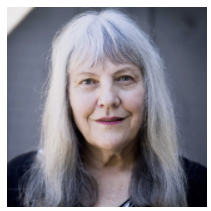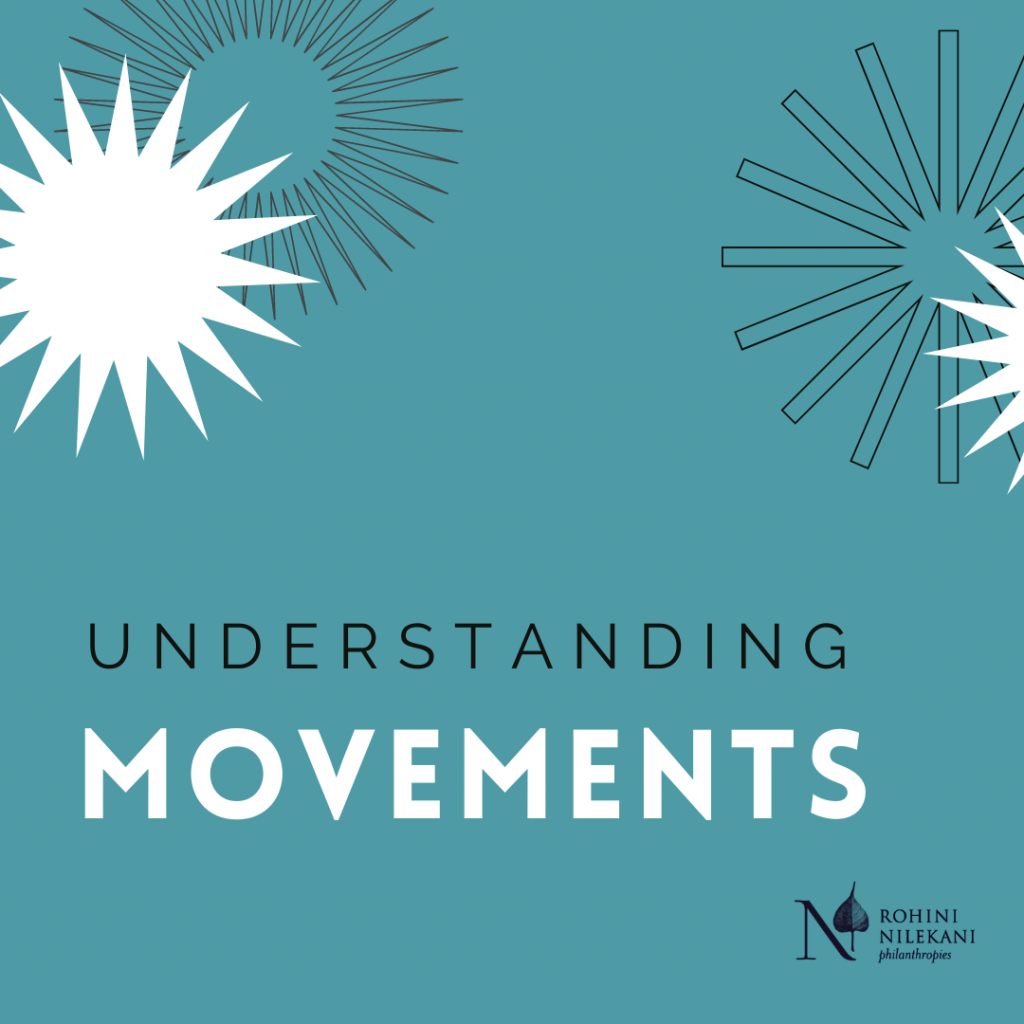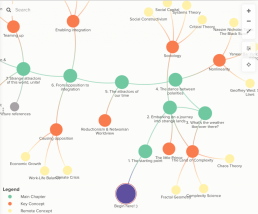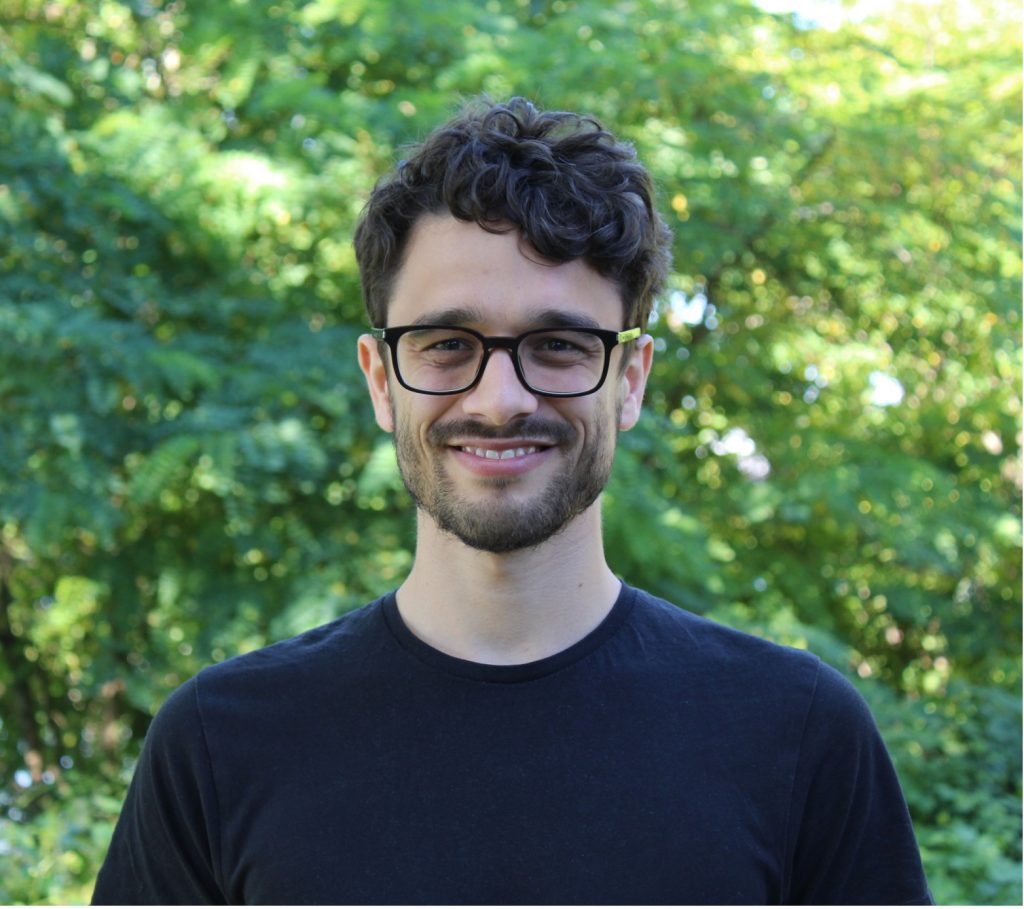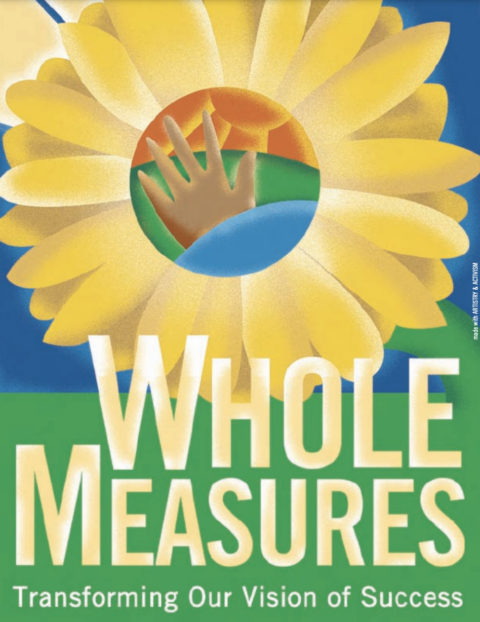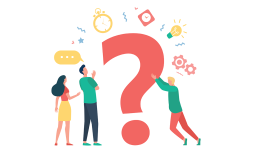The illusion of hopelessness
The war in Ukraine is a symptom of something bigger— and within reach
In times of war, we are led to believe we are powerless.
We are told that violence is inevitable, an unfortunate part of the way things are. And that the way things are cannot change.
As world events have transpired over the last two weeks, this illusion has begun to splinter
* * *
Russian military forces invaded a sovereign nation on February 24th. Within days, the United States, the European Union, and other nations announced a series of economic sanctions on Russia. At the same time, countries of the European Union waived visa rules for Ukrainian refugees–allowing those fleeing war to enter the EU without having to seek asylum.
Homes across Europe have opened their doors to Ukrainians fleeing war, and President Biden announced that Ukrainian refugees would be welcome in the US “with open arms.”
These moves were swift and unprecedented. Rules that had long existed were replaced with new ones. Systems changed as people and countries moved together in response to a humanitarian crisis.
How quickly rules can change when we want them to.
How malleable systems can be when we agree on what is right.
* * *
Russia’s attack on Ukraine, like all wars, is a symptom of a worldview of domination and extraction.
Like all wars, it exists amid other symptoms and consequences of this worldview: modern dependence on oil and the interests of the fossil fuel industry; unmistakable racism at the Ukrainian border as Africans were systematically turned away.
And the global coordination to condemn Russia’s attack and support the Ukrainian people was made possible, in part, by white supremacy: Western sensibilities were stirred by seeing white refugees. Meanwhile, escalating humanitarian crises in Afghanistan, Palestine, Yemen, Syria, Somalia, and Ethiopia have not been met with the same swiftness.
Imagine a world where all people in need were met with dignity and humanity. Where violence and harm was met with resounding care.
Imagine systems of governance that hold these values above all others.
* * *
In times of war, we are led to believe we are powerless by those who benefit from our silence. We are led to believe our collective systems cannot change by those who benefit from the way things are. Meanwhile, worldviews of domination and extraction continue to shape our reality and perpetuate harm.
As the war in Ukraine has unfolded, we’ve also seen a wave of dehumanizing legislation against queer and trans young people, increasing threats to reproductive justice, and an alarming epidemic of homelessness continuing in the US, all while COVID cases spike in Europe and Asia.
When we understand that all violence is a symptom with the same cause, we can also see that we are not just spectators to what is happening — in Ukraine or right beside us.
There is hope, and the hope is us.
* * *
“There is never time in the future in which we will work out our salvation.
The challenge is in the moment; the time is always now.”
~James Baldwin
Resonance Network is a national network of people building a world beyond violence.
Originally published 3.16.22 at Reverb
Seeing the World Through a Network Lens
June Holley offers Network Weaving Workshop, another training slide deck for use in your organization or network. It provides an introduction to many network concepts and includes a number of activities such as speed networking, mapping your network, and the Network Weaver Checklist.
This slide deck is particularly good for sets of organizations who are not well connected. As result of this session, they would be starting to see the world through a network lens.
The slides are offered in pdf format, but we are also sharing a link to the google slides. Create a copy of the presentation and save it as a new name in your google drive. This way, you can modify them to adapt the presentation to the particular group you are working with.
Access the Network Weaving Workshop slide deck HERE.
June Holley has been weaving networks, helping others weave networks and writing about networks for over 40 years. She is currently increasing her capacity to capture learning and innovations from the field and sharing what she discovers through blog posts, occasional virtual sessions and a forthcoming book.
featured image found HERE
THE TAPESTRY: Weaving Life Stories
You are invited to listen to The Tapestry Podcast.
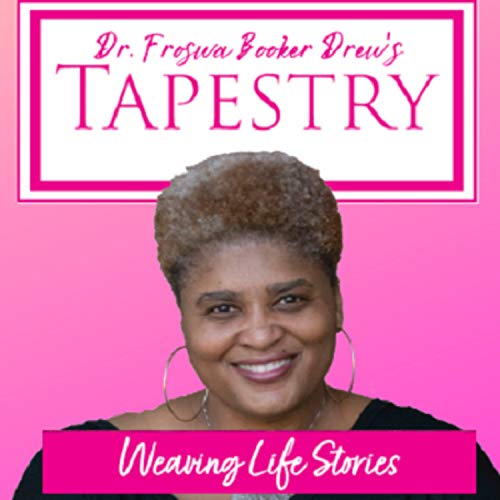
The podcast is about bringing people together to explore the rich, woven textures of our narratives. Our stories are impactful and in listening to the stories of others, we learn more about our own power, claim our purpose and pursue our passion. The fabric of our lives as women is strong, resilient and when we come together, we can make a beautiful piece of work to inspire, support and sustain our personal and professional lives. Although designed for women 50 and above, the wisdom shared is ageless. Join us as we share, laugh hysterically, cry, and keep it real all at the same time.
Some of The Tapestry's most recent episodes include:

THE STORIES BEHIND THE DATA - Meme Styles
In 2015, Meme Styles founded MEASURE to promote the use of evidence-based projects and tools to tell real-life stories behind the numbers. As a catalyst for systems change, MEASURE has grown to a fully operational nonprofit social enterprise that provides free data support to Powerful Black and Brown-led communities. So far the organization has provided over 3000 free data support hours to Black and Brown - led organizations.
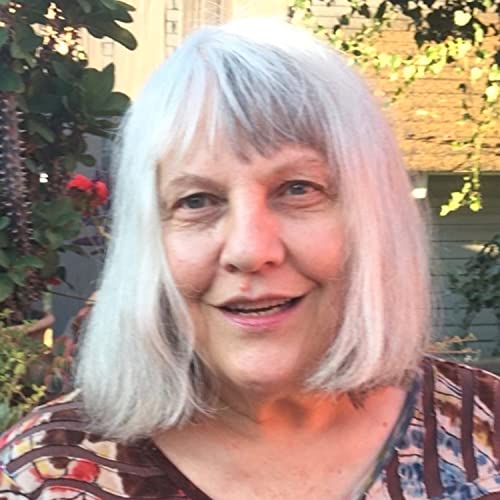
CREATING A PERSONAL NETWORK FOR TRANSFORMATION -- June Holley
June Holley has been weaving networks - and helping other learn to weave networks – for over 40 years. Much that she learned is included in The Network Weaver Handbook, 400 pages of simple activities and resources for Network Weavers. She also created www.dev.networkweaver.com, a site with many free resources and a blog authored by over 40 network weavers.

BOUNDARIES IN BUSINESS AND IN LIFE FOR 2022 - Kimberly Oneil
Kimberly O'Neil is an award-winning professor, executive leader, and social good expert. She was the youngest serving African American woman City Manager in the United States. As a veteran senior government and nonprofit executive, Kimberly has used her voice to impact policy decisions while lobbying in New York City and on Capitol Hill. She now works within the social sector and leads Giving Blueprint, a consulting company with a mission to impact social change through the development of strategic partnerships and growth plans within the social sector.

CRITICAL CONVERSATIONS ABOUT RACE - Amber Sims
Amber currently serves as the Executive Director of Young Leaders Strong City, a nonprofit focused on youth development, leadership, and racial equity. She was formerly the Director of Regional Impact for Leadership for Educational Equity, an educational nonprofit focused on leadership pathways in civic engagement. Previously, Amber led workforce development at Workforce Solutions Greater Dallas Opportunity Center. Her theory of change was to emphasize the connection between education, workforce, and dual generation impact.
Other guests have included:
- Dallas Maverick CEO and President Cynt Marshall
- Leah Frazier , 2-Time Emmy Award-Winning and 10-Time ADDY Award-Winning entrepreneur
- Paula Stone Williams, internationally known speaker on issues of gender equity, LGBTQ advocacy, and religious tolerance
- Rafia Zakaria, author of Against White Feminism (W.W. Norton, 2021) and Veil (Bloomsbury, 2017) and a writer for the Guardian, Boston Review, The New Republic, The New York Times Book Review and Al Jazeera America
- Gretchen Bauer, Luxury handbag manufacturer
Find all The Tapestry episodes HERE
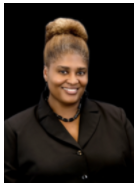
Dr. Froswa’ Booker-Drew is a Partnership Broker. Relational Leadership Junkie. Connector. Author/Speaker/Trainer. Co-Founder, HERitage Giving Circle. Currently, the Vice President of Community Affairs of the State Fair of Texas, she has been quoted and profiled in Forbes, Ozy, Bustle, Huffington Post and other media outlets around the world. In addition, she has been asked to speak on a variety of topics such as social capital and networking, leadership, diversity, and community development to national and international audiences. This included serving as a workshop presenter at the United Nations in 2013 on the Access to Power.
featured image found HERE

Network Weaver is dedicated to offering free content to all – in support of equity, justice and transformation for all.
We appreciate your support!
donate in the box above or click here
BUILDING OUR NETWORK MAPPING MUSCLES : A Webinar
You are invited to an interactive webinar on network mapping on March 16th
An introduction from June Holley
Some time ago I connected Katy and Paul, as they were both interested in new approaches to mapping. After further conversations they decided to collaborate (which I affectionately call a "Twosie") on a slide deck that presents their approaches - which is just what I always hope will happen with an introduction!
The thing I particularly love about their work - and why I think you should come to this workshop - is that they understand that the real power of network mapping comes when the network itself has a chance to make sense of the maps and use them to improve their network.
* * *
Building Our Network Mapping Muscles: Perspectives on the effective use of network maps
the upcoming webninar:
Network maps are a powerful tool for accelerating connection and impact in network activities. Discerning what type of network map fits best for the network’s needs, as well as taking thoughtful steps to make the maps most deeply serve their intended purpose, are important considerations for network weavers and members alike.
In this Network Weaving Institute-sponsored session, network practitioners Paul van der Cingel (Windesheim UAS, The Netherlands) and Katy Mamen (Water Bear Collaborative, USA) will share lessons learned from several learning and impact networks they have worked with. June Holley will open the session with some remarks about the emerging field, and following the speakers’ presentation, participants will have an opportunity to share and discuss additional lessons learned about building effective networks.
Wed Mar 16, 2022 2pm – 3pm Eastern / 11am – 12pm Pacific
click here for session information
the Slide Deck Resource:
This slide deck was inspired by an earlier presentation on the Network Weaver website about the Innovation Learning Network (a network of hospital systems across the U.S.), which implemented a highly effective strategy to use their network maps.
A central message of the Innovation Learning Network resource is that “network mapping needs to be combined with a strategy for engaging network participants in interpreting the maps and then developing strategies for connecting people in the network and drawing in new participants.” Building on the ILN’s learning, this resource offers additional perspectives on:
- different types of network maps and their utility for different applications
- high-leverage ways to make the most of your maps.
Access the slide deck HERE
* * *
Katy Mamen is Principal at Water Bear Collaborative, a consultancy that supports individuals, organizations, and networks to envision and implement system-informed strategies that effectively address the complex and interconnected challenges of our time. Katy passionate about participatory change-making approaches that account for the complexity of multiple, interconnectedness crises and diverse lived experiences.
Katy is a Fellow of the Academy for Systems Change, Senior Partner at Ag Innovations, and a member of the Network Weaver Consultants Network. She has an MSc in Holistic Science (with Distinction) from Schumacher College in the UK and a BSc (Honours, First Class) in Physical Geography from McGill University in Montreal. Katy lives in a land-based intentional community in Northern California, where she has honed her consensus decision-making skills over the past 15 years.
Paul van der Cingel started out as an economist with an honours degree from Tilburg University.
He holds a parttime position as Intrapreneur at Windesheim University of Applied Sciences in the Netherlands, focused on designing, testing and implementing new ways to foster education on complexity.
He contributed to the Network Science in Education Initiative (NetSciEd) by initiating their Concepts & Ideas Brochure translation movement, out of which 18 translations have emerged up till now. See here.
Outside of Windesheim University, Paul is an independent trainer and consultant. You can reach out to Paul:
By sending an e-mail to: p.van.der.cingel@windesheim.nlor on social media via LinkedIn.
Social Change Networks Playbook
The challenges that the world faces today, from climate change to highly unequal economic and social structures cannot be solved by one organisation, government or institution alone. We need to collaborate to share learnings, scale innovations and build our collective capacity to bring about social impact.
The social change networks playbook is the product of a participatory learning journey that we as a group of network practitioners, funders and researchers went on together. Together, we made sense of some of the key questions, challenges and opportunities of impact networks, as well as good practices in facilitating and funding networks. This playbook is our humble contribution to share the learnings that emerged from our journey and support fellow practitioners and funders who develop networks for social impact.
We see these networks as groups of individuals and organizations that harness their connections and relationships towards a shared purpose, to learn together and collaborate to achieve a positive impact on a complex societal or ecological challenge.
There is a rich and growing body of both lived experience and research showing that collaboration through networks can enable learning, cultivate awareness, pool resources and widen access to opportunities. Impact networks can be critical to bringing about systems change across sectors, whether this is in education, youth development, gender equality or philanthropy. However, there are still many questions about how networks can become more thriving, adaptable and resilient:
- How do we most effectively take networks from talk to action?
- How do we convey the value of networks?
- How can we better democratise access to networks?
- What are good practices to build networks?
- How can networks drive systems change?
- How do we know when networks are working?
Through this playbook, we begin to share ideas and frameworks to start addressing some of these questions. The playbook is:
- A Practical Guide that is recognizable, useful and immediately applicable.
- A Curated Overview of resources and methods to support deeper learning.
- An Honest Invitation to experiment with collaboration and alignment.
In each chapter we invite you to use the resources and findings we share to reflect, learn and build strong networks in your contexts We acknowledge that we merely scratch the surface of these questions in this playbook. The more we learned throughout our journey, the more questions arose. We, therefore, invite you to also engage deeply with the reflective questions and additional resources.
Here is an overview on the chapters on different puzzle pieces that are important to consider when developing social change networks:
And, here is what other network weavers, facilitators and capacity builders said:
"The playbook is a valuable resource for network leaders and practitioners. Anyone working to create change through collaboration will be well served by reflecting on the questions and exploring the wealth of resources contained within. ” - David Ehrlichman
"Helpful and practical! This playbook is a great reference for practitioners or anyone who wants to learn how to better understand networks for impact and how to develop them. Anyone working with and “developing social impact networks should have this by their side!” - Kerry Lea Forrester, Lecturer on networks at Tilburg University
“Insightful and reflective of the dynamism of impact networks, the playbook offers clear and accessible guidance for network practitioners and funders alike, using a rich variety of real-world examples and resources. Recommended for stakeholders at any stage of their impact network evolution.” - Gwen Beeman – Small Foundation
CLICK HERE to download a PDF of Social Change Networks Playbook.
We hope you will find it as useful in your own work to co-create thriving networks. It is our collective intention and sincere hope that this playbook contributes to our collective ability to realize a more flourishing world for all.
In connection,
The network learning journey cohort, InHive & the project team.
inHive works closely with partners to develop networks that enable communities to leverage existing resources and amplify impact on their local and global communities. We work with partners from around the world – from school networks in Pakistan, to youth leadership programmes across Africa, to global funders – to build skills and expertise, design network structures, and facilitate participatory methods and collaborative activities for shared engagement, learning, and impact.
Businesses without Bosses: from hard-nosed leadership to sustainable, self-managing systems
As many of you know, I’m very passionate about helping people understand and experiment with self-organizing.
Joella Bruckshaw and Julian Saipe are executive coaches who have a wonderful podcast series called ‘Behind The Screen’ where they share leadership insights with high profile leaders. In this series of impromptu discussions, Joella and Julian, along with their invited guests, discuss success, the characteristics we choose to reveal, and those we choose to keep behind the screen - engaging thoughts on leadership, performance, authenticity and having fun.
In Episode 12 of the podcast series, Joella and Julian talked with me about Self-Organization.
Our conversation explored how “businesses without bosses” can thrive, just as nature’s own eco-systems do. We also discussed how coaching could facilitate a transition from hard-nosed leadership to sustainable, self-managing systems, where purposefulness itself is the outcome.
Access the interview on Behind the Screen podcast at: iTunes/Apple HERE & Amazon Music HERE
June Holley has been weaving networks, helping others weave networks and writing about networks for over 40 years. She is currently increasing her capacity to capture learning and innovations from the field and sharing what she discovers through blog posts, occasional virtual sessions and a forthcoming book.
featured image found HERE
Understanding Movements
What follows is an excerpt from the Understanding Movements report, researched by Kapil Dawda, commissioned by Rohini Nilekani Philanthropies. You can access the full report and the accompanying Understanding Movements deck at the bottom of this post.
A movement in its simplest form is an act or process of moving. For example, an object moving from point A to point B embodies a movement.
In the context of social change, there are multiple ways to move from point A to point B. The most commonly encountered approach in the modern world is a programmatic one. It is employed by social and private sector organisations and governments through scale programs, like the Samagra Shiksha Abhiyan. There are also collective-impact-based approaches, which have a more distributed and networked way of approaching change. Lastly, there are movements, a particular kind of collective impact.
In the context of social change, a movement has:
- A diverse collective of people and organisations coming together as participants
- The shared intention to create wide-scale, transformational change focused on a social, economic, environmental, or political problem that guides the collective direction
- Distributed, shared and bottom-up action by multiple participants, including those at the grassroots
Many famous movements emerged in the face of pressing crises. Some examples are the
Quit India Movement or Civil Rights Movement of the past and contemporary movements like the Arab Spring or #MeToo. However, movements are not limited to those that arise in response to a crisis that escalates through triggering incidents. Many others address latent, not urgent problems by applying the same principles. For example, Service Space is a global movement to unleash the innate spirit of generosity in people. YouthXYouth is another example of a worldwide movement focused on bringing back the agency of young people in their learning experience!
Movements are more than collective, confrontational action against oppressors in power. This view over-simplifies the complexity and leads us to think in terms of just bilateral dynamics. Many lasting movements take a more systemic view. To view movements more holistically, we must observe the relationships between the leaders, the participants, the organisations and the stakeholder groups involved. It is also worth examining who the leaders are, what they do, how they lead and most importantly, why they do it. It enables us to appreciate how movements work with a diverse collective to bring social, environmental or political change.
In their book New Power, Jeremy Heimans and Henry Timms define New Power as “a current. It is made by many. It is open, participatory, and peer-driven. It uploads, and it distributes. Like water or electricity, it is most forceful when it surges. The goal of ‘new power’ is not to hoard but to channel.” By this definition, movements are a form of new power focused on bringing societal change.
Access the Understanding Movements Report and Presentation Deck HERE at NetworkWeaver and HERE at Rohini Nilekani Philanthropies
This resource explores:
- What are movements?
- What is their relevance in social change?
- What are some of their defining features?
- How do they differ from programs or collective impact?
Rohini Nilekani Philanthropies (RNP) supports ideas, individuals and institutions doing ground-breaking work that enables a strong samaaj (society). The areas of work constitute a wide range spanning Access to Justice to Water. RNP has identified Active Citizenship, Climate and Biodiversity and Young Men and Boys as priorities.

Kapil Dawda is the Co-Initiator of the Wellbeing Movement, a Team Member at Viridus Social Impact Solutions and an active member of the Weaving Lab and Presencing communities. He is keen on tapping into the power of many to enable everyone, especially youth and children, to lead thriving lives
Originally published at Rohini Nilekani Philanthropies
by Kapil Dawda, commissioned by Rohini Nilekani Philanthropies
Being a strange attractor
This article forms the first in an intended series of articles. The main theme of that series is to reflect on a new language for social transformation. For me, language goes beyond words, concepts or metaphors. Essentially, it is the filter through which we look on life, perceive our environment and plan our actions. Changing our language, therefore, is a powerful way towards personal and collective transformation.
Every article of the series is dedicated to a specific theme or concept. Yet, rather than enriching your vocabulary, it is much more the shift in perspective underneath the concept that I want to contribute to. In our case, strange attractors are a concept from chaos theory. Exploring strange attractors are therefore a gateway into the world of chaos, dynamical systems and complexity. And what is a strange attractor?
Well… there is no simple answer. But I have an idea where to start.
To enable non-linear reading I visualised the article on kumu as a dynamical map:

The starting point
Life puzzles me. Partly my own. Even more so fundamental questions like how life emerged? Or human sense-making: how on earth is it even possible that we can communicate? I jot down these black & white symbols on a keyboard, they appear on a screen and you can understand what I am trying to say.
In a similar way: given the goodness and well-intendedness of many of us, how are we able to create phenomena like environmental destruction? What social and psychological principles are at play in our daily lives that enable outcomes we don’t want?
The reasons for asking myself these questions are twofold: I have a genuine curiosity to go to the bottom of things, wanting to understand the root causes rather than superficial appearances. Understanding for its own sake so to speak.
And then there is this undeniable desire to drive social change. I came here for a reason. Not to accept what is happening around me, but to play an active role in co-creating our future. This part of me is highly intentional, using knowledge to identify leverage points for personal and social transformation. More specifically, I am eager to learn and embody how I can contribute to meaningful change.
In the past years, those motivations (or better: driving forces) lead me down some rabbit holes, both in theory and practice.
Embarking on a journey into strange lands
Due to my fascination for social change, it is not such a surprise that I studied sociology. There, most approaches and (meta) theories are relatively systematic, with the ambition to explain and the tendency to categorise. It is difficult to speak about the diverse field of sociology in general terms. Yet what I often found was theories and methods that made sense of events once they happened. Categorising the past and projecting it into the future. And then making those events fit the theory. It reminded me of the story of the little prince, visiting the king on his planet*:

Little prince: “Sire–over what do you rule?”
King: “Over everything,” said the king, with magnificent simplicity.
[…] Little prince: “And the stars obey you?”
King: “Certainly they do,” the king said. “They obey instantly. I do not permit insubordination.”
Little prince: “I should like to see a sunset … Do me that kindness … Order the sun to set…”
King: “You shall have your sunset. I shall command it. But, according to my science of government, I shall wait until conditions are favorable.”
Little prince: “When will that be?” inquired the little prince.
King: “Hum! Hum!” replied the king; and before saying anything else he consulted a bulky almanac. “Hum! Hum! That will be about– about– that will be this evening about twenty minutes to eight. And you will see how well I am obeyed.”
I was curious to find out if there is more. My backpack filled with Weber & Elias, Luhmann & Habermas, Foucault & Bourdieu, Berger & Luckmann I expanded my search for answers; and wandered off into the strange lands of complexity science, chaos theory and fractal geometry. For me, those excursions have not only been fascinating from an academic perspective, but also insightful for my life as a social entrepreneur. I invite you to come with me and discover those strange lands. And I promise that I will guide you back at the end.
What’s the weather like over there?
Welcome in the world of complexity! As with most other foreign places, things work a bit differently here. Let’s start with a quick introduction first: As James Gleick in his groundbreaking book “Chaos. Making a new Science” put it:
“the act of playing the game has a way of changing the rules”
If you want it or not: as soon as we arrive at the shores, we are not merely passive visitors. We are active agents and influence what is happening here. A complex system, therefore, is dynamic and adaptable. It responds to its environment yet has its own “agenda”. The question, then, is what provides orientation for the behaviour of the system and the actors within it? The answer: Strange attractors!
Some of us may be familiar with pictures like those:

CC BY-SA 3.0.
It shows the so-called Lorenz attractor. It describes visually how a dynamical system behaves, in this particular case the flow of fluid under certain conditions. The attractor itself is “the whole thing”, the space that spans all potential behaviour. We can see that there are two central attractor points around which the system seems to rotate. The strange thing is that – despite having knowledge about all relevant parameters – it is impossible to predict how the system will evolve over time. This is called nonlinearity. Caused by those weirdly arranged attractors.
As an analogy, you can imagine the weather: Weather with all its components (temperature, air pressure, humidity etc.) is the system. If we measure those components and visualise them, we get our (visualised) attractor of the system; most likely indicating us certain central points. In most geographical locations, there are two main states, summer (dry season) or winter (rainy season). Let’s say “summer” is the attractor state on the left, “winter” on the right. Any day of the year constitutes a point. Usually, we know if it’s summer or winter, and how the next days will roughly be like. Yet any precise prediction beyond 10 days is almost impossible. And at some point, the system will shift. We know it will happen, yet we don’t know the exact day. No matter how much information we have at hand.
As our nerdy friends would say: The weather is a chaotical & nonlinear system. Its behaviour rotates around two central attractor states. This leads to the fact that the system is locally unstable yet globally stable. That’s quite strange, yes. But what does that have to do with social transformation?
To me it seems that societies, communities, families (put any social system you like here) rotate around certain states as well. Conservative or liberal, open or closed to “outsiders”, free markets or state-centred economies. Those systems experience periods of prolonged stability (economic growth with prosperity), followed by a rapid & sometimes unexplainable “switch” (the dotcom or housing bubble bursting). Looking with that lens on my environment has helped me a lot to understand social change. Order and chaos should not be seen
“as antagonistic and fixed states but rather as stages in a process of dynamic and transformational becoming”.
― Elisabeth Garnsey and James McGlade
The same accounts for any dynamical system with more than one equilibrium, more than one attractor state so to speak.
The dance between polarities
Butterflies have two wings. We have winter and summer (or rainy and dry season). There is life and there is death. Following those examples, polarities seem to unite stability and movement. In that sense, opposites are not really opposing each other. They create space for life to happen in between.
“The only way to make sense out of change is to plunge into it, move with it, and join the dance.”
― Alan Watts
We tend to care about what happens around us; and oftentimes have the desire to influence it in a certain way or direction. Joining in the dance does not mean to accept everything that happens. Rather, it means to understand that it is the underlying rhythm that moves us. To change the dance, we have to change the music (or the polarities in our case).
Taking the principle of nonlinearity into account, there are ways to make a certain behaviour (of a system) more likely, orientating it towards a (desired) attractor state. Yet, despite our best efforts, we can never know what will actually happen. Life is unpredictable. But life is not random either.
And we have a true super-power on our side. Social systems differ from the weather in one important aspect: the attractor states are social constructions. They are based on language and culture, on individual and collective agency. And what was constructed once by people can be changed. In other words: We have the capacity to create and establish new attractors.
The attractors of our time
“Grown-ups love figures… When you tell them you’ve made a new friend they never ask you any questions about essential matters. They never say to you “What does his voice sound like? What games does he love best? Does he collect butterflies? ” Instead they demand “How old is he? How much does he weigh? How much money does his father make? ” Only from these figures do they think they have learned anything about him.”
― Antoine de Saint-Exupéry, The Little Prince
Translated into a social context, we can see an attractor state as a shared set of beliefs and internalised symbols and habits. A fix point within a certain system like family or economy. The word “purpose” comes relatively close to it. Let’s examine what the current attractor states of our society are. For the sake of length and digestibility, we will keep it short, unscientific and subjective.
Western thought is highly influenced by the idea of a mechanical universe (Newton) and mind (Freud). It emphasises the difference between an individual and its environment, and the differences between people. The centre of this worldview, then, is the autonomous and isolated individual.
“I, a stranger and afraid
In a world I never made.”
― A.E. Housman, Last Poems
As we know, attractors stabilise behaviour. The attractors emerging out of this particular worldview are economic growth & meritocracy as well as the attempt to control our environment (which includes both our natural and social environment). It is a paradigm of competition, of “me/us against”. As a consequence, we usually only focus on one side of the polarity; the side that we prefer and desire. And we pathologize the other side. Economic growth is good, de-growth is bad. Being happy is desired, depression is something we have to treat with medication. It’s like wanting to breath in all the time, judging all the outbreaths.
Still, orienting our behaviour towards those states brought enormous prosperity (for some) and stability. We live in an era of unseen peace, economic wealth, scientific discovery and global interconnectedness. Yet something is off. It feels like our own inner attractors (our personal purpose, our desire for integration and wellbeing) pull us away from society’s inner attractors. The tricky thing is that both types of attractors – individual and collective – are usually invisible. Usually.
“And now here is my secret, a very simple secret: It is only with the heart that one can see rightly; what is essential is invisible to the eye.”
― Antoine de Saint-Exupéry, The Little Prince
From opposition to integration
We are still in the land of complexity, remember? We learned that here, attractors of a system are not seen as opposites. On summer follows winter, follows summer, follows winter. The system is healthy when it shifts between both states. This leaves us with the question:
What are healthy polarities for us as society?
Let’s look at an example that some of us (me for sure) struggle with: balancing working and resting / free time. An alternative way to phrase it could be: Creating something specific (for others) vs. taking care of yourself only. The current paradigm likes to phrase that as “work-life balance”, one of the most horrible terms I know. As if working would not be part of my life. The underlying polarity is “being productive vs. allowing yourself time to be unproductive”. In a more mechanistic view to drive the point home: running the machine vs. oiling the machine. (with the addition that even “unproductive” time is often turned into a product – like consuming advertisement).

That’s not a healthy attractor to me. And I see myself falling into this polarity if I am not careful and attentive. An alternative way of phrasing it would be: I am enjoying my time either creating something meaningful for other people (a.k.a. working) or I enjoy to just do things for their own sake. In this way, the mechanistic attractor (work vs. life) is replaced by a more wholesome attractor (meaningful and intentional action & enjoying things simply for themselves). It’s still two polarities, yet they don’t oppose each other.
In a similar fashion, we can look at our climate crisis. We live on the expense of our environment. And this challenge cannot be solved with simplistic regulations or public claims that keep the idea of economic growth alive. No, the paradigm of economic growth is not compatible with environmental survival. It does not work to simply include nature into this growth-logic (calling it sth. like green technology). We need new polarities, new attractor states to address this challenge. An economic attractor that allows certain elements to be outside of the linear growth logic. What this could be I leave up for your imagination.
Sounds idealistic? Well, I would call it pragmatic imagination. As all we see around us was an image in our heads first, then turned into “reality”. One invitation I see here is to move away from a paradigm of needing to know and control, rather framing the attractor around a central question. How can we integrate work and free-time into a fulfilling life? How can we assure both our material wellbeing and the wellbeing of the nature that surrounds us? It’s OK to not have the answers (attractor states) yet. But we can (re)frame the attractor around them.
In this, the world desperately needs individuals who are capable of transcending the worldview of opposites, black and white, gain and loss, good and bad. A world of scarcity and competition. Not just conceptually, but with our actual behaviour and actions.
“We but mirror the world. All the tendencies present in the outer world are to be found in the world of our body. If we could change ourselves, the tendencies in the world would also change. We need not wait to see what others do.”
― Mahatma Gandhi
Strange attractors of this world, unite!
Are you seeking to create a future for yourself and others that is different from the present? As an activist, social entrepreneur, philanthropist, parent, consumer …? Then I would consider you as a change agent, or strange attractor. Somebody who inspires and motivates themselves and others to act on a worthy ideal. A strange attractor in that sense can be any individual, but also an idea, a startup or a movement we represent.
We may be far out in the old paradigm, and it is frustrating from time to time. But we can constitute the centre points in the new paradigm. We are the ones to create new attractor states for our common future.
So how can we do that?
I see two crucial steps to make this happen. And you may have guessed already: Number one is to be the strange attractor yourself. Be the space and inspiration for others. Embody a new path for action. Number two is to team up and create (new) social systems jointly. Both steps are courageous and bold. And here is why:
Embodiment is not only an intellectual exercise. Here I speak out of tough personal experience: Stating that I want to achieve something (e.g. to be a humble and inspiring leader) often created distance. Rather than motivating me, it made me (subconsciously) believe that I am not there yet. Doing the inner work is required. Knowing and accepting ourselves. Embracing our inner beauty, shadows and power. And there are no quick fixes or shortcuts.
Teaming up is even more delicate. It requires us to find each other, create thriving teams, organisations and networks. In short: institutionalise new attractors. Probably this will cause opposition. From others and from within. As it requires us to let go of our individual dreams to form collective ones.
My answer to that is: yes, that’s quite a task, but what else should we do? What else are we here for?
Jannik Kaiser is co-founder of Unity Effect, where he is leading the area of Systemic Impact. His desire to co-create systemic social change led him down the rabbit holes of complexity science, human sense-making (e.g. phenomenology), asking big questions (just ask “why” often enough…) and personal healing. Having worked in the NGO sector, academia and now social entrepreneurship
Originally published at UnityEffect.net
Into the Matrix and Beyond: The Value of Network Values and Values-Focused Processes
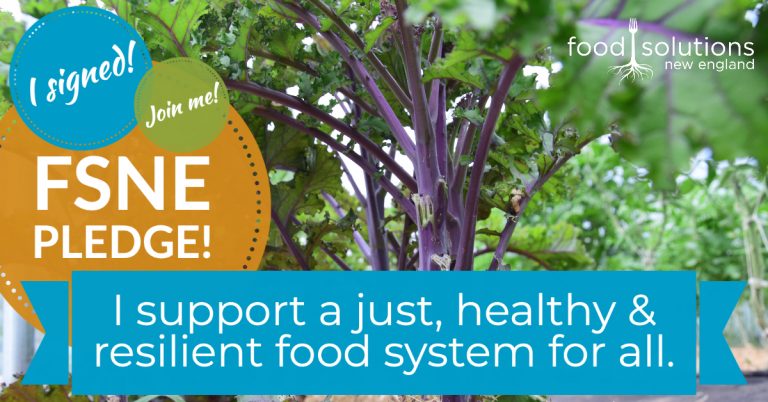
A couple of years after the Food Solutions New England Network officially published the New England Food Vision, and just after the network formally committed to working for racial equity in the food system, it formally adopted a set of four core values. On the FSNE website, a preamble reads: “We collectively believe that the food system we are trying to create must include substantial progress in all these areas, alongside increasing the consumption of regionally produced foods and strengthening our regional food economy and culture.” The four values are:
Democratic Empowerment:
We celebrate and value the political power of the people. A just food system depends on the active participation of all people in New England.
Racial Equity and Dignity for All:
We believe that racism must be undone in order to achieve an equitable food system. Fairness, inclusiveness, and solidarity must guide our food future.
Sustainability:
We know that our food system is interconnected with the health of our environment, our democracy, our economy, and our culture. Sustainability commits us to ensure well-being for people and the landscapes and communities in which we are all embedded and rely upon for the future of life on our planet.
Trust:
We consider trust to be the lifeblood of collaboration and collaboration as the key to our long-term success. We are committed to building connections and trust across diverse people, organizations, networks, and communities to support a thriving food system that works for everyone.
In the last few years, these values have generated a lot of good discussion, both internal to the network and with others, and we are discovering that this really is the point and advantage of having values in the first place. They can certainly serve as a guide for certain decisions, and in some (many?) instances things may not be entirely clear, at least at first. What does racial equity actually look like? Is it possible for a white-led, or white dominant, institution to embody racial equity? Can hierarchical organizations be democratic? Are there thresholds of trust such that people are willing to not be a part of certain decisions in the name of moving things forward when needed?
Recently, FSNE received an email from a Network Leadership Institute alum who now works as a commodity buyer for a wholesale produce distributor in one of the New England states. They reached out to inquire who else in the network might be thinking about high tech greenhouse vegetable production in the region. Specifically their interest was talking about projects that use optics of being “community based,” but are financed by big multinational corporations. “What would a “just transition” framework look like in the context of indoor agriculture,” they wondered, especially in light of undisclosed tax deals happening as the industry rapidly grows.
As it turns out, a public radio editor recently reached out to FSNE Communications Director, Lisa Fernandes, about pretty much the same thing, also referencing other similar projects taking root in different parts of the region. What does FSNE think of these? Part of her response was that there are some good questions that not only the New England Food Vision (currently being updated), but also the Values, can raise to evaluate the potential role of some of these more tech-heavy food system projects and enterprises as the region strives to be more self sufficient in its food production. And this conversation is certainly growing.
These exchanges in our region have had me thinking about work colleagues and I have been doing with food justice advocates in Mississippi. A central part of this also lifts up values as being key to establishing “right relationships” between actors in the food system, and also between advocates and partners (including funders) from outside of the state. I have learned much from Noel Didla (from the Center for Ideas, Equity, and Transformative Change) and her colleagues about the importance of establishing what they call “cultural contracts,” which create a foundation of values-based agreements as a way of exploring possibilities for authentic collaboration. The signing of any contract is just a part of a process of ongoing dialogue and trust building. For more on these contracts and culture building, see the recording of a conversation Karen Spiller and I had with Noel and other Mississippi food system advocates during the FSNE Winter Series earlier this year in a session called “The Power of the Network.”
“Daring leaders who live into their values are never silent about hard things.”
Brene Brown
In a different series of workshops with those same Mississippi-based advocates, we introduced a values-focused tool from the PROSOCIAL community. PROSOCIAL is rooted in extensive field research (including the commons-focused work of Nobel Prize winning economist Elinor Ostrom) and evolutionary and contextual behavioral science. PROSOCIAL offers tools and processes to support groups in cultivating collaborative skillfulness and the critical capacity of psychological flexibility, including the application of Acceptance and Commitment Training/Therapy (ACT) techniques.
The ACT Matrix (see below) is something that individuals and groups can use to name what matters most to them (their core values), along with aligned behaviors (what are examples of living out these values?), as a way of laying a foundation for clarity, transparency, agreement, support and accountability. The Matrix also helps people to name and work with resistance found in challenging thoughts and emotions that might move them away from their shared values. The upper left quadrant is a place to explore what behaviors might be showing up that move people away from their stated values. In essence, this helps to both name and normalize resistance and when used with other ACT practices (defusion, acceptance, presence, self-awareness), can encourage more sustainable, fulfilling (over the long-term), and mutually supportive choices.
An additional values-based tool we have lifted up both in New England and in our work in Mississippi is Whole Measures. Whole Measures is a participatory process/planning and measurement framework from the Center for Whole Communities). There is both a generic version of this framework, as well as one specifically focused on community food systems (more information available here). As CWC points out, “How the tool or rubric framework is used, how the community engagement is facilitated, who is represented in the design matters.” Whole Measures is about content, yes, and it is meant to be used for ongoing deep dialogue, especially amidst complexity, diversity and uncertainty, and when faced with the challenge of tracking what matters most that can also be difficult to measure.
When it comes down to it, these times seem be asking us what kind of people we really are and strive to be. As the old saying goes, “If you don’t know what you stand for, you’ll fall for anything.” And so the work of values identification and actualization is of paramount importance. I’ll leave it to the poet William Stafford to appropriately close this post with his poem, “A Ritual to Read to Each Other” (something we often share with social change networks as we launch, especially the first and last stanzas):
If you don’t know the kind of person I am
and I don’t know the kind of person you are
a pattern that others made may prevail in the world
and following the wrong god home we may miss our star.
For there is many a small betrayal in the mind,
a shrug that lets the fragile sequence break
sending with shouts the horrible errors of childhood
storming out to play through the broken dike.
And as elephants parade holding each elephant’s tail,
but if one wanders the circus won’t find the park,
I call it cruel and maybe the root of all cruelty
to know what occurs but not recognize the fact.
And so I appeal to a voice, to something shadowy,
a remote important region in all who talk:
though we could fool each other, we should consider—
lest the parade of our mutual life get lost in the dark.
For it is important that awake people be awake,
or a breaking line may discourage them back to sleep;
the signals we give — yes or no, or maybe —
should be clear: the darkness around us is deep.
Curtis Ogden is a Senior Associate at the Interaction Institute for Social Change (IISC). Much of his work entails consulting with multi-stakeholder networks to strengthen and transform food, education, public health, and economic systems at local, state, regional, and national levels. He has worked with networks to launch and evolve through various stages of development.
Originally published at Interaction Institute for Social Change
featured image found here
Funding networks: Answering the what, why, and how
Networks often require donor funding to undertake activities to achieve their visions and missions. But, as we so often hear in our work with networks, mobilizing and managing adequate funds pose a host of challenges, both for networks and their donors. And, given the paucity of existing research, the fundamental questions of what, why, and how donors fund networks are as yet broadly unanswered.
Collective Mind recently completed the first phase of a participatory research study that engages both networks and donors to better understand donor funding to networks. By shedding light on these key questions, the study seeks to improve donors’ funding approaches with networks and to inform networks’ fundraising strategies. The first phase of our study included collecting responses from both networks and donors to an initial survey and reviewing the limited related evidence base. Our findings from this phase – outlined below – will inform the next steps of the research.
The what, why, and how of donor funding to networks
Based on survey responses and our review of the literature, practical challenges seem widespread. While many networks receive project or programmatic funding, these types of funds are generally mismatched to networks’ needs. A focus on outputs limits the ability of networks to cover their core functions like serving and engaging members. Appropriately funding networks requires funding processes – for communication, dialogue, exchange, co-creation, and collaboration – not necessarily funding specific projects. Networks require funding for developing network infrastructure and shared resources, member facilitation, convenings, communications, measurement and learning, general operations, facilitation, research, and more. In general, networks typically need more general flexible support that covers staffing costs – but struggle to find it.
Other practical challenges arise as a result of the sometimes-amorphous organizational status and limited capacity that networks often have. Networks without legal status or a central governance or management mechanism may limit their options for funding. Channelling funds through intermediaries as an alternative brings other administrative challenges. Likewise, networks often lack the capacity for grant/proposal writing and reporting and may not be able to meet strict financial and administrative requirements or follow related procedures.
These practical challenges, while critical, can be viewed as manifestations of deeper disconnects – between what and how donors fund and what networks need based on what they’re capable of undertaking and achieving. These disconnects can be structural, for example, where donor strategy and operations set short-term funding cycles or limit the flexibility of funding types. They can also reflect a lack or misunderstanding of the nature of networks, how they function, and the specific kinds of value they’re capable of creating by facilitating and coordinating members towards defining shared goals and taking collective action.
Non-project-based types of investments in networks might not align with donor goals or their needs to see a direct return. Similarly, donors often struggle to understand how their funding can help to support network development and improvements. As noted elsewhere, even understanding what a network’s capacity may be as a baseline to build that capacity can seem daunting. Measuring a network’s health and determining its potential for sustainability likewise require custom frameworks and tools grounded in network expertise. Furthermore, the nature of networks and how they create change defines how we can describe their impacts and measure success. The nonlinear nature of the value creation of networks – for which progress is often intangible – creates challenges for identifying, tracking, and monitoring outcomes and impacts.
Critically, myriad complications arise about the role(s) that donors should play when investing in a network. Networks and donors struggle with the challenge of donor influence that shifts the priorities of the network, lessens ownership, or creates conflicts. It is often unclear how a donor can fund without biasing the structure and direction of a network (particularly for nascent networks), either intentionally (e.g. by demanding changes to obtain funding) or unintentionally. Donors may also underestimate the range of roles they can play not just as a funder but as a member or supporter in other ways (such as connecting the network to other resources, partners, etc.).
Answering the pressing questions
These key findings are the starting point for our next steps. They will shape the templates against which we co-develop case studies on both networks and donors about their funding to deepen our understanding of the interconnected issues and develop cross-comparative analysis. Through these next stages of the research, we hope to answer questions from the most practical, such as whether networks should register as legal entities to increase their funding options, to those of the highest order – as to whether the philanthropic funding model for networks needs to be recreated.
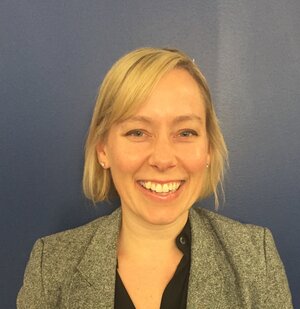
Kerstin Tebbe is the Founder of Collective Mind.
Kerstin has 18 years of experience supporting networks and multi-stakeholder collaboration. Her passion for networks was ignited by 6.5 years (2008-2014) spent on the Secretariat for the Inter-Agency Network for Education in Emergencies (INEE) where she coordinated an international technical working group, established a pan-African knowledge hub, and served as Deputy/Acting Director of the network.
Interested in participating in our research and developing a case study of your organization? Get in touch at kerstin@collectivemindglobal.org.
Originally published at alliancemagazine.org
featured image found HERE


